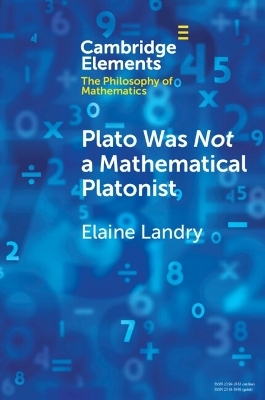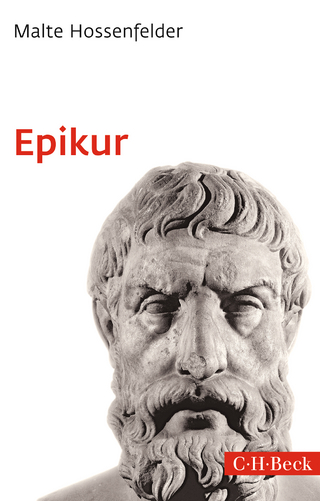
Plato Was Not a Mathematical Platonist
Seiten
2023
Cambridge University Press (Verlag)
978-1-009-31378-0 (ISBN)
Cambridge University Press (Verlag)
978-1-009-31378-0 (ISBN)
This Element shows that Plato keeps a clear distinction between mathematical and metaphysical realism. It also shows that methodological commitments to mathematical objects are made in light of mathematical practice; foundational considerations; and, mathematical applicability. This title is also available as Open Access on Cambridge Core.
This Element shows that Plato keeps a clear distinction between mathematical and metaphysical realism and the knife he uses to slice the difference is method. The philosopher's dialectical method requires that we tether the truth of hypotheses to existing metaphysical objects. The mathematician's hypothetical method, by contrast, takes hypotheses as if they were first principles, so no metaphysical account of their truth is needed. Thus, we come to Plato's methodological as-if realism: in mathematics, we treat our hypotheses as if they were first principles, and, consequently, our objects as if they existed, and we do this for the purpose of solving problems. Taking the road suggested by Plato's Republic, this Element shows that methodological commitments to mathematical objects are made in light of mathematical practice; foundational considerations; and, mathematical applicability. This title is also available as Open Access on Cambridge Core.
This Element shows that Plato keeps a clear distinction between mathematical and metaphysical realism and the knife he uses to slice the difference is method. The philosopher's dialectical method requires that we tether the truth of hypotheses to existing metaphysical objects. The mathematician's hypothetical method, by contrast, takes hypotheses as if they were first principles, so no metaphysical account of their truth is needed. Thus, we come to Plato's methodological as-if realism: in mathematics, we treat our hypotheses as if they were first principles, and, consequently, our objects as if they existed, and we do this for the purpose of solving problems. Taking the road suggested by Plato's Republic, this Element shows that methodological commitments to mathematical objects are made in light of mathematical practice; foundational considerations; and, mathematical applicability. This title is also available as Open Access on Cambridge Core.
1. Introduction; 2. The interprative lay of the land; 3. The divided line; 4. Book 7; 5. The good in mathematics; 6. Mathematics versus metaphysics; References.
| Erscheinungsdatum | 18.01.2023 |
|---|---|
| Reihe/Serie | Elements in the Philosophy of Mathematics |
| Zusatzinfo | Worked examples or Exercises |
| Verlagsort | Cambridge |
| Sprache | englisch |
| Maße | 154 x 230 mm |
| Gewicht | 150 g |
| Themenwelt | Geisteswissenschaften ► Philosophie ► Philosophie Altertum / Antike |
| Mathematik / Informatik ► Mathematik ► Geschichte der Mathematik | |
| ISBN-10 | 1-009-31378-9 / 1009313789 |
| ISBN-13 | 978-1-009-31378-0 / 9781009313780 |
| Zustand | Neuware |
| Haben Sie eine Frage zum Produkt? |
Mehr entdecken
aus dem Bereich
aus dem Bereich
mit Sokrates, Seneca, Platon & Co. im Gespräch
Buch | Hardcover (2023)
FinanzBuch Verlag
CHF 25,20


